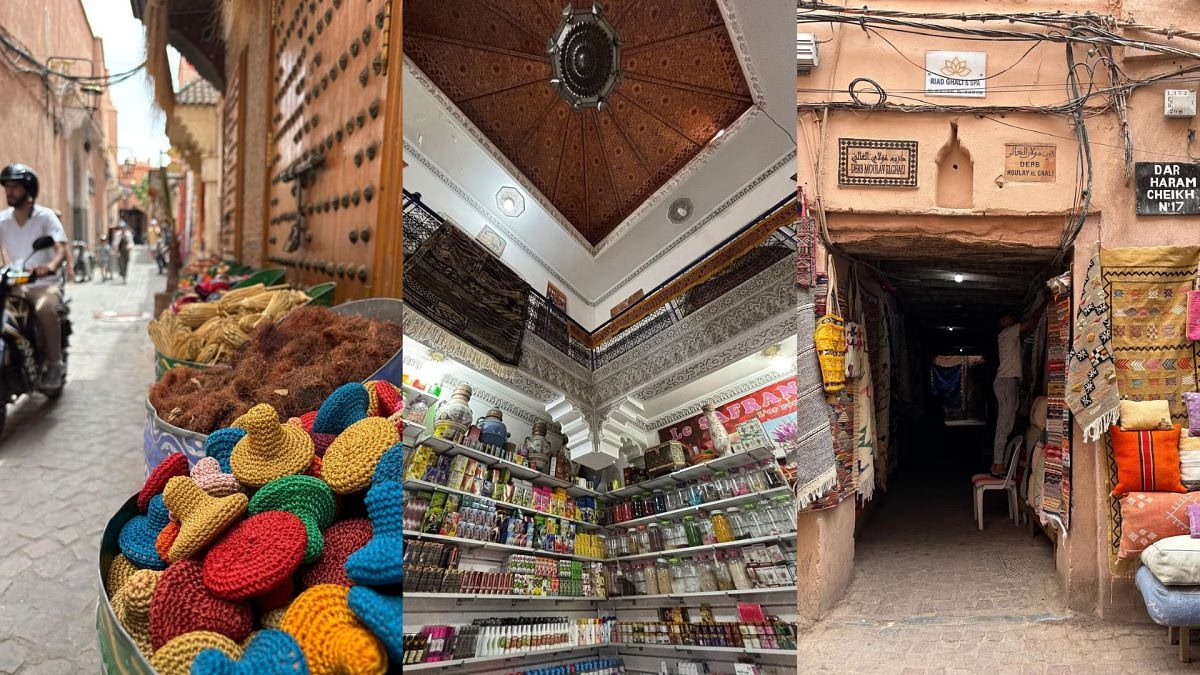Wafa, wearing a pristine white lab coat amidst rows of bottles and jars, explains the meticulous process of extracting argan oil.
This age-old method is treasured in Morocco, and in this cooperative located in the heart of Marrakech, it is exclusively carried out by women.
She demonstrates how to carefully peel the argan nut to extract the kernel while another woman expertly operates the hand-cranked press to draw out the oil.
Occupying a beautifully restored blue and white tiled ex-riad, the argan oil cooperative is part of a network of organizations in Marrakech dedicated to empowering women, especially those who are widows, disabled, or facing economic difficulties.
Other cooperatives focus on carpet weaving and culinary arts.
Marrakech’s historic crafts and traditions inspire international artists, from Yves Saint Laurent to interior designer Bill Willis. Experience these timeless practices during your next visit to the Red City.
Explore Marrakech’s Women’s Artisanal Cooperatives
Wafa, with her sharp wit, advises her female guests that radiant skin can be achieved by leaving their husbands or using cactus oil.
For snoring partners, she humorously points to a pillow before suggesting a gentler remedy of nigella seeds and menthol herbs.
Alongside cactus oil, the cooperative produces orange blossom oil, rose oil, black exfoliating soap, and various spices, with argan oil being their most prestigious product.
Once harvested by Berber women in the desert for medical and culinary use, argan oil is now incorporated into hair oils, facial creams, and soaps by the cooperative. Although these items are not inexpensive, the labor and expertise behind each container make them valuable.
Adjacent to the oil cooperative is the carpet cooperative Palais Saardien, where intricate weaving projects can take months to complete.
Here you’ll find detailed Arabic-style carpets and the authentic, textured Berber style, which combines weaving, knotting, and embroidery techniques.
If the shopping whets your appetite, stop by the women’s cooperative Amal to savor homemade dishes such as fish tagine or the beloved Friday couscous. This cooperative trains women in professional cooking and also offers French language classes.
Fire Dancing, Spice Workshops, and Moroccan Feasts
At Casa Memoria, a contemporary rental villa on the outskirts of Marrakech, a fire dancer with a glistening headpiece skillfully manages the wind during her performance.
With grace and allure, she dances to a fusion of traditional Moroccan rhythms, connecting touristic appreciation with the cultural heritage of the region.
While fire dancing as a traditional tribal practice has evolved for tourism, it retains the essence of the female dancers who once moved to the beat of the drums in the Atlas Mountains.
Casa Memoria arranges unique experiences like market tours and spice workshops, hosting these events on its expansive olive-tree-laden lawns under the ochre portico.
At the nearby sister property, Sirayane, guests can enjoy a traditional hammam treatment using black soap made from crushed olives for soft skin.
Back at Casa Memoria, guests can savor dinner feasts featuring Moroccan classics like zalouk salad, sweet almond pie, and Moroccan crepes with candied fruits in a feast room designed with whimsical Moroccan flair.




